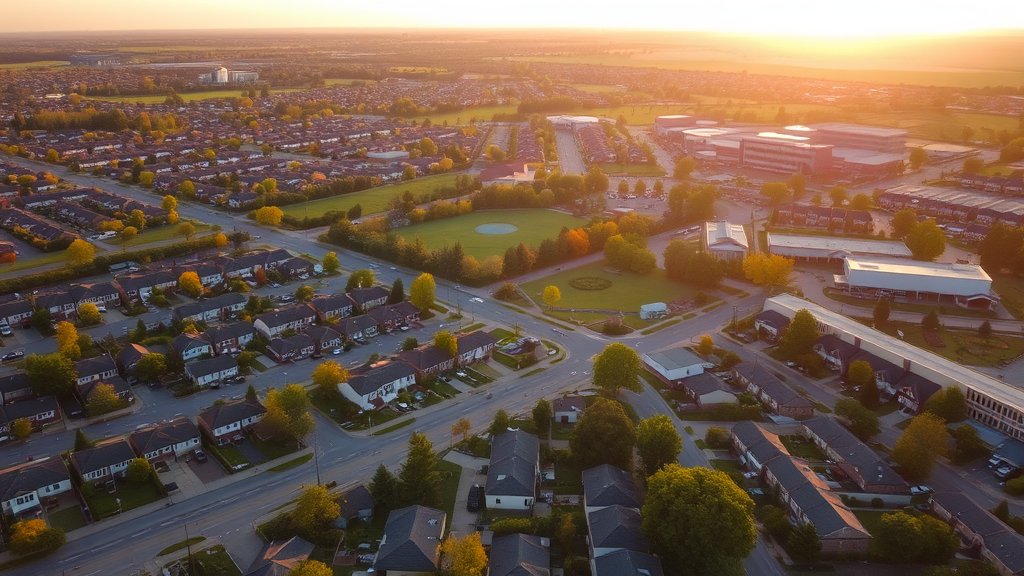How zoning laws shape your neighborhood and daily life
Ever wondered why some neighborhoods have towering apartment complexes while others stick to cozy single-family homes? It all boils down to zoning laws. These regulations dictate what can and can’t be built in specific areas, ensuring that communities develop in a way that’s orderly and beneficial for everyone involved. But zoning laws aren’t just about buildings—they shape the very essence of our neighborhoods, from the types of homes we live in to the local parks we enjoy.
Understanding these laws can feel like cracking open a cryptic code book. But once you get the hang of it, you start seeing how these rules impact your daily life in ways you might not have imagined. It’s like getting a backstage pass to the planning of your community. Let’s dive into the world of zoning laws to see what they mean for your neighborhood.
Types of residential zoning and their impact
First off, there are different types of residential zoning. The most common are single-family and multi-family zoning. Single-family zoning is usually reserved for areas where you’ll find standalone houses, each on its own plot of land. Think suburban bliss: kids playing in backyards, garden gnomes guarding flower beds, and maybe even a white picket fence.
On the flip side, multi-family zoning allows for multiple housing units on a single plot of land. This includes apartment buildings, townhouses, and other forms of shared living spaces. These areas tend to be denser and might offer more amenities like public transportation or nearby shops. But with greater density often comes more noise and less privacy—trade-offs that are part and parcel of urban living.
The type of zoning can have a profound impact on the character of your neighborhood. Single-family zones usually cultivate a quieter, perhaps more family-oriented environment. Multi-family zones, however, might foster a more diverse and dynamic community. It’s fascinating how these simple classifications can shape the way we experience our day-to-day lives.
How to find out your local land use regulations
Curious about what kind of zoning applies to your area? Don’t worry; it’s not as daunting as it sounds. Most local governments offer resources to help residents understand their zoning regulations. A quick visit to your city’s planning department website can provide you with all the maps and documents you need.
You might even find interactive tools that allow you to enter your address and see exactly what type of zoning applies to your property. These tools often include layers showing historical districts, flood plains, and other pertinent information that could affect future development. So before you dream up that backyard ADU (Accessory Dwelling Unit) or plan a major home renovation in your achtererfgebied, checking these resources is a smart move.
If digital sleuthing isn’t your thing, consider dropping by your local planning office. Staff there are usually more than happy to explain the ins and outs of your neighborhood’s zoning laws. They might even provide insights on upcoming changes or developments that could impact your area.
Common restrictions and allowances in residential areas
Zoning laws are chock-full of restrictions and allowances designed to maintain harmony in residential areas. One common restriction is building height. For example, single-family zones might limit homes to two stories to preserve a uniform skyline. On the contrary, multi-family zones could allow for taller buildings to accommodate more residents.
Setbacks are another crucial aspect. These regulations dictate how far buildings must be from property lines, roads, and other structures. Setbacks ensure there’s enough space for gardens, driveways, and even emergency services access. Imagine trying to navigate a fire truck down a street where every house hugs the curb—setbacks help avoid such chaos.
Local governments might also regulate things like lot coverage, dictating how much of your plot can be occupied by buildings versus open space. This ensures there’s room for greenery and reduces stormwater runoff issues. Restrictions like these might seem nitpicky but think of them as the fine print that keeps neighborhoods livable and enjoyable.
Getting involved in local zoning decisions
Believe it or not, you have a say in your community’s zoning decisions! Local governments often hold public meetings where residents can voice their opinions on proposed changes. Whether you’re all for new developments or dead set against them, these meetings offer a platform for your thoughts to be heard.
Engaging in these discussions isn’t just about voicing complaints; it’s about shaping the future of your neighborhood. You get to hear different perspectives—from city planners to fellow residents—and contribute to decisions that will impact everyone involved. It’s democracy in action at the most local level.
So next time you hear about a zoning meeting in your area, consider attending or at least submitting your thoughts online if that’s an option. Your voice matters more than you might think, and who knows? You might even find it fascinating to see how these decisions come together.
Conclusion
Zoning laws may seem like dry legalese at first glance, but they play a pivotal role in shaping our everyday lives. From deciding whether you can build that dream backyard deck to determining the overall vibe of your neighborhood, these regulations are far-reaching.
Understanding the basics—like what types of residential zoning exist and how they impact communities—can empower you to make more informed decisions about where you live and how you engage with local governance. So next time you’re sipping coffee on your porch or walking through your neighborhood park, take a moment to appreciate the subtle but essential role zoning laws play in crafting those experiences.
